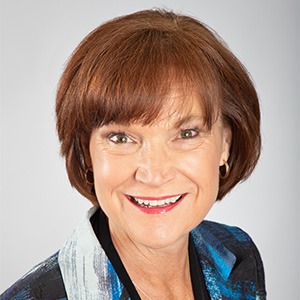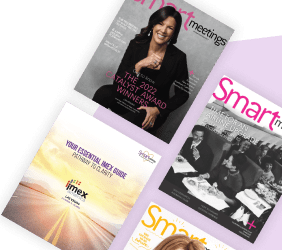How to pivot gracefully when something happens to an expert on the way to the stage
You’ve curated the perfect speaker panel, confirmed your thought leaders and prepared for a dynamic discussion—then one of your panelists cancels. Budget cuts, last-minute emergencies or visa issues have become more common. So what now?
As event organizers, we’ve all faced this last-minute scramble. The good news? You have a few options in your back pocket:
- Call on that backup panelist who’s been fully briefed and is on-site or on-call.
- Redesign the agenda that accounts for a smaller panel.
- Make the session more interactive by inviting audience participation, going deeper with fewer voices, or shifting to a moderated fireside chat with the few remaining panelists.
- Have the panelist join virtually, if they are still available. This introduces complexity–especially if you have an in-person and/or remote audience with both in-person and remote panelist(s)–but it can work beautifully with the right preparation.
While hybrid panels offer flexible solutions, they come with their own set of challenges. From rethinking energy dynamics to integrating backup strategies, here’s how to navigate the unexpected and still deliver a powerful panel:
The Technology Has to Work. Remote panelists allow for real-time interaction, but only if the tech works flawlessly. Do a full run-through beforehand—whether their participation is in-person or pre-recorded.
Read More: What to Expect When Booking A-List Event Speakers
- Mind the details. Ensure the remote panelists have strong internet, a quality microphone, and good lighting. Even the most brilliant content won’t land if the audience can’t see or hear them properly.
- Pre-recorded segments can work. Capture a short 60-90 second video of each of the remote panelists’ key points. The moderator can reference or build on their ideas during the session. Bonus: consider having the remote panelist join in for live Q&A toward the end of the session.
- Visually equalize the stage. Display remote panelists on large monitors at eye level to give them a “virtual seat at the table” If using a single large screen, don’t have it not stuck in a corner or off to the side. Position your moderator and panelists near it at eye level to create a more natural conversational flow.
- Balance the sound experience. Mic all in-room panelists equally and ensure remote voices are piped through the main speaker system with no delay or distortion. Crisp audio is just as important as crisp insight.
Coach your Remote Panelists. Don’t assume your remote panelists are ready just because they click a Zoom link. Provide guidance on how to show up strong:
- Sit forward, stay within camera frame, and keep the camera at eye level.
- Use gestures and a touch more energy than usual to stay engaging on screen.
- Pay attention throughout the panel—the audience will be looking at you!
- Speak conversationally and establish a “signal” with the moderator that you want to contribute to the conversation.
- Keep your responses concise—90 seconds max—and pass the baton to other panelists
- Prepare a soundbite-ready “headline,” of a few key messages as well as a clear call-to-action.
- Remind all panelists—remote or in-person—that panels aren’t about showing off. They’re about showing up for a fabulous conversation for the benefit of the audience.
Don’t Ignore the Energy Gap. When some panelists are remote and others are in-person, the dynamic can feel uneven. Hybrid success hinges on creating a sense of unity across formats. Here’s how to make the experience feel natural and cohesive:
- Bring remote panelists into the room—literally and visually. Use a confidence monitor so the in-room moderator and panelists can see their faces without turning away from the audience.
- Draw them in. A skilled moderator will loop in remote panelists early, often and by name. (Note: this is a developed skill—many moderators will unintentionally overlook the remote participants).
- Encourage cross-talk. Panelists should be briefed in advance to reference each other—especially across in-room and virtual boundaries. When an in-person panelist says, “I’d love to hear what [Remote Panelist] thinks about that,” it signals true inclusion.
- Let remote panelists see the audience. If they can’t, use a roving camera to share reactions and keep them connected to the room.
Get Creative with Coverage. If hybrid isn’t an option and a panelist is absent, think outside the box:
- Ask for a statement. A written quote or a short video (even from their phone) can still offer value.
- Try the “empty chair” technique. Have the moderator reference the missing panelist’s perspective, then ask the audience to weigh in.
- Fold in the audience. Allocate more time for questions or invite a “hot seat” participant from the audience can create an unexpected highlight moment.
Rehearse the “What Ifs.” Panelist no-shows don’t have to derail your session. But pretending it couldn’t happen? That’s a risk. Run your panel design through this quick checklist:
- Do I have a backup panelist or a plan for a smaller panel?
- Will I allow live or pre-recorded remote participation?
- Have I briefed the moderator on how to manage hybrid energy dynamics?
- Do all panelists know how to engage (and shine) in a hybrid environment?
A little foresight goes a long way. With a flexible mindset and thoughtful design, even an unexpected panelist absence can turn into an opportunity for creativity, deeper dialogue, and a truly memorable session.
—
 Kristin Arnold, CSP, CPAE, CPF | Master is a high-stakes meeting facilitator and a leading expert on speaker panels. She is on a crusade to stop boring panels—one lively, well-designed conversation at a time.
Kristin Arnold, CSP, CPAE, CPF | Master is a high-stakes meeting facilitator and a leading expert on speaker panels. She is on a crusade to stop boring panels—one lively, well-designed conversation at a time.
Join her at powerfulpanels.com.




